Bivy
AH senior member
Location: Uhlenhorst, Mariental, Namibia
Outfitter: Uhlenhorst Hunting Safaris
PH: Hoekus van Niekerk Jr.
Trackers: William, Mandela
Manager/Owner: Hoekus Sr. and Connie van Niekerk
Dates: May 10-19, 2015 (Hunt) and May 19-25 (Self Drive to Etosha and Swakopmund)
Area hunted: Uhlenhorst, Naukluft Mountains, and Hochfeld
Rifle: .300 WSM - Tikka T3 Lite paired with Nikon Monarch 3-9x and 180g Federal Trophy Copper
Animals taken: Hartmann's Mountain Zebra, Southern Greater Kudu, Warthog, Red Hartebeest, 2x-Oryx, 2x- Kalahari Springbok
Additional Animals seen: Blesbok, White and Black Springbok, Black Wildebeest, Impala, Ostrich, Klipspringer, Steenbok, Bat-earred Fox, Black-backed Jackal.
__________________________________________________________________________
*This report will take the form of a photo-essay with captions which mirror details of my daily journal. Anybody who has further questions can feel free to private message me.
* Airline tickets were arranged by Lori Spears of Travel Express...EXCEPTIONAL SERVICE!
* Self-drive was arranged by Gemma Dries of Discover Namibia...also, EXCEPTIONAL SERVICE!
Day 1: Uhlenhorst

...William spotted a kudu bull; 47-48" bull just entering prime (not a first-day shooter). Wow!...Extremely photogenic!
Day 2: Naukluft Mountains




...my first African animal was a Hartmann's mountain zebra taken on Day 2 of our hunt in the Naukluft Mountains. This stallion was accompanied by a couple mares and foals, and after spotting them first thing in the morning, our PH guided us on a walk and stalk route that allowed us to intercept the herd. These zebra are very wary and prefer the protection of rocky ridges during the daylight hours; only coming to the flat lands primarily at night to water. The lack of vegetation creates a challenge when approaching to adequate shooting range, and Hoekus and I eventually became pinned down. Whether the stallion was aware of our presence or not, he was facing our direction at ~75 yards and we were forced to hide behind a tiny bush and discuss a game plan. This break provided the time I needed to calm my nerves and focus on what I needed to do to take a steady, accurate shot. As we formulated a plan the mares arrived, snorted, there was dust, and we were up and advancing forward. Hoekus placed the sticks, I saw a zebra, he said shoot the leader, and I hoped I was on the leader as a squeezed the trigger for a ~200 yard shot. The shot resonated, as well as the hallow thud of a bullet contacting flesh and bone. But, the stallion ran as if he wasn't hit. I followed with the rifle and Hoekus confirmed blood developing on the shoulder. After 300 yards and a few seconds the stallion had crossed the drainage, ran up the other side, separated from the herd, and collapsed from a shot that pierced both lungs. He is beautiful, and I have become a mountain zebra hunter; a species thats habits reminded me of elk hunting in the desert, and a species I wish to pursue again in the future...





...On the evening of the second day, a few miles from where I had harvested the mountain zebra that morning, I placed my hands on the spirals of the animal that had called me to Africa. But to back up...
After dropping the zebra off to be washed, skinned, and the meat processed, we drove to a riverbed that Hoekus said frequently held kudu bulls. The drainage was gorgeous, reminiscent of a mountain/prairie transition Cottonwood bottom in Montana, but comprised of a more drought tolerant tree species and lacking water in the river bed. We parked the Land Cruiser, descended the rocky rim to the riverbed, and began an upstream march searching for kudu and checking leopard baits. The conclusion of this walk had resulted in the brief sighting of a couple kudu cows and the observation of three troops of baboons that taunted us well within rifle range to fire a shot and potentially scare any kudu bull residing in the area. Despite their curiosity nearly killing one or two, we resisted all temptation, and left the drainage to return that evening and move/freshen the overly tainted leopard baits.
On a sidenote...while hiking Rebekah and I noticed some branches freshly broken from a low canopy bush species. It was obvious some animal was feeding on the leaves. I had heard of eland displaying this behavior; breaking branches with their horns to feed on them. However, the presence of baboons made us ask Hoekus if the branches were broken from baboons or kudu. He validated that what we were seeing was the result of kudu bulls breaking the branches with their horns.
Soooo....that evening we returned to the creekbed to freshen the leopard baits. With that task complete and the sun slipping ever lower to the horizon, we began the bumpy ride down the creekbed in the Land Cruiser heading for the cold beer and springbok dinner that awaited us that night. Suddenly a kudu burst from the bush ~20 yards from the front of the bakkie. Hoekus immediately said to grab the rifle and that we must pursue. As him and I walked in the direction the kudu traveled he expressed over and over again that he REALLY liked this bull. Fortunately for us the bull had only traveled a short distance. We spotted him and he turned and walked broadside to us into an opening in all his glory. Hoekus said to shoot, and I accommodated at a distance of ~75 yards. As the bull stopped broadside and looked our direction the crosshairs slipped from his spiraling horns, down the neck, and to the shoulder. Breath, exhale, squeeze, recoil, and congratulations. The bull didn't take another step.
The reality of harvesting a kudu took awhile to set in. I think I could of sat with it the rest of the night and admired the coat, the grain of the horns, the spiral, and facial chevron and spotting. At the time I didn't realize what I had. What I have is an old, old, very mature bull. A bull that Hoekus informed me was likely a male that would no longer breed based on it's body condition.
I don't know what he measures, nor do I really care. He is heavy and old and the perfect spirals for me and the perfect bull to be harvested from the population. He is my first kudu, but he will not be my last kudu...
Day 3: Naukluft Mountains



...Ostriches, Mountain Zebra, Klipspringer, Hyrax, 1- big, BIG Trophy bull kudu (+55"). Very Wide! Will return for his progeny...
Day 4: Hochfeld




...On the 4th day of our hunt we relocated to a new property Northeast of Windhoek with the plan to hunt warthog. We were forewarned about the humor and action associated with this hunt and Rebekah and I eagerly anticipated our arrival. The previous nights conversation with Hoekus Sr. was perfectly accurate and we were not disappointed!
Basically the game plan was simple. The majority of warthogs water between 10am-2pm and they are blind as a bat, so we arrived at the waterhole Hoekus Jr. had selected at approximately 9:30. William (the Nama driver/skinner) set up some camp chairs for us ~60 yards from the water under the shade of a bush, and we gathered books, phones (games), and the wonderful packed lunches Connie had prepared and settled in to await the arrival of the pigs. By 9:55 the first hogs arrived on scene and over the next 3 hours and 45 minutes barely 10 minutes passed without a new group coming on scene. The number of warthogs coming to this one water was outstanding; probably in excess of 50 during the duration of our sit! And from what we were told, due to switching wind currents, this number was about half of what normally comes in.
It is hard to explain, but everyone should experience this hunt who ventures to Namibia. As a beginner African hunter warthogs are probably the easiest animal to judge. Big ivory males stick out like a sore thumb, and the presence or absence of the paired warts just below the eyes indicates males or females. I believe silent laughter filled both Rebekah and I on several occasions watching the babies come running in tails erect searching for some mud to roll in. Additionally, we had five jackals come in, and Hoekus Jr. practiced his lip squeaking to draw one to within 20 yards of us. (This would of been a great time to have a silenced .22 in our possession!)
And so at 1:45pm as more movement was detected coming to the water we turned our binoculars onto the arriving pig to see good ivory. After seeing young boars, sows, and warthog-lets, as well as, a brief glimpse of another good ivoried boar that retreated when the wind shifted, this was the largest boar of the day and he looked just right to me! The bullet entered his shoulder at a distance of ~60 yards, he traveled under 50 yards, somersaulted through a fence, and came to rest without another kick. Warthog down!
This area produces some incredible warthogs, and now Rebekah wants one...one bigger than mine! I guess we will have to return! While driving that evening we saw a couple pigs bigger than this one, and I look forward to the day I can sit water again...




...After dropping the warthog off with the skinner and taking a brief nap we headed out the evening of the 4th day searching for red hartebeest. This particular area of Namibia has higher densities of red hartebeest than the other areas we hunted. We drove the roads glassing the back of large cattle pastures for hartebeest emerging from the bush. I didn't realize it, but hartebeest are cautious and choose to only come out to feed in the late evenings and early mornings. The thickness of the bush made it nearly impossible to pursue them during the day. As we drove from pasture to pasture we observed kudu, oryx, warthogs, and jackals, but the hartebeest remained hidden. But that was about to change...
After returning to the primary pasture, Hoekus was the first to spot a few hartebeest emerging way, WAY in the back. He quickly formulated a gameplay, we crossed our fingers that one of them was a bull, and off we went. We traveled via the bakkie down the road and field edge to the back bush and began our stalk. As we were racing the sunset, we quickly hustled through the brush attempting to avoid detection. Finally, at about 250 yards the moment of truth came. We weren't going to get any closer. Up went the sticks, and on went the camera as our PH transitioned into a cinematographer. Off went the shot and it was all over, the bull dropped on the spot.
I didn't know anything about hartebeest, but he looked big. Turns out he is BIG, and their hides are absolutely gorgeous. Everything was perfect, the evening, the sunset, the company, the shot, the bull...and I decided right then that he would be the priority animal to have shoulder mounted. Unlike the previous three animals I had harvested I don't think I will ever shoot another red hartebeest, but I'm glad to have this one and he will represent that moment of absolute perfection in Africa every time I look at him...
Day 5: Uhlenhorst


...Travel Day. Lots of guineas; killed one with the truck. 1-black mamba and 2- puff adders in the road. Stomach is not well; blame guavas!...
Day 6: Uhlenhorst




...Feeling much better! Oryx rematch and they lost. The puzzlement resulting from a strategically placed blue cooler in a common fence crossing, resulted in the herd milling and offering a shot. Not the longest bull in the herd, but great mass. Tough animals...


...Management springbok this evening. The sunsets leave me speechless, and at the same time invigorated with creativity...
Day 7: Uhlenhorst (Last Day Hunting)
...I missed...wobbly branch...EXCUSES! My streak of one-shot kills while in Africa has ended with a springbok ram. Not happy missing easy shot; much laughter...Miss-titus! Hope to find a management oryx after lunch...

...On the evening of the last day we departed the bakkie to repeat a walk from that morning. Almost immediately upon leaving the Landcruiser I spotted movement to our right. ORYX! Well maybe it was with more hushed excitement, but for once I had spotted game before Hoekus or Rebekah. The oryx were trotting from right to left in the direction of a water tank, but we weren't certain whether they were fleeing our arrival or heading to quench their thirst. As we advanced on the water tank and saw movement it became apparent that luck was on our side...
Some oryx watered, others milled, and still others stared us down as we crotched behind some cover ~125 yards away. Hoekus assessed the two oryx presenting frontal shots and confirmed they were cows; we were looking for a bull, a short-horned or broken-horned bull (management oryx). Then another oryx to the left of the surveillance crew was glassed and confirmed to be the animal we were looking for. Unfortunately he was tucked behind a bush and not presenting a shot at the moment; however, Hoekus instructed that if the bull stepped out into the open broadside and offered a clear shot without the worry of hitting another I was to take the shot. Almost immediately following these words the oryx did exactly that, Hoekus plugged his ears, the rifle spoke...the oryx reared and ran.
The bull was hit, and I assumed very well based on the location the crosshairs lifted from. But, it was the first animal to not immediately drop or go down in view. Within a second or two he had been swallowed by the bush, and so we began tracking. Rather Hoekus began tracking, while I stumbled in the direction the herd had retreated. After ~500 yards and a few specks of blood I was getting worried! It was time to turn back and regroup. And then, possessing the African tracking magic, Hoekus turned to the left, looked back, and 10 feet from where we stood lay my double-lunged oryx bull. I yelled, might of even embraced the man, and breathed a HUGE sigh of relief. Mission Oryx was complete, but we still had an hour of hunting left and another species of interest became targeted as we moved the oryx into the shade and continued our trek...



...The last hour of the last day was spent searching for a trophy springbok ram. We had seen hundreds over the past week. We had passed on some very good rams on the first day not wanting to scare kudu or oryx out of the area near where we were presently hunting. I had almost pulled the trigger on a couple splendid rams over by the Naukluft Mountains, but they fled the crosshairs before the trigger squeeze was complete. And this very morning I had missed a ram in this area. As we walked springbok seemed to of evaporated from the landscape. The occasional female was observed, but males were nearly non existent. The sun was rapidly setting, we had an oryx that needed to be loaded, and we needed to retrieve the bakkie. It was time to turn back.
I was content...actually far beyond content. After loading the oryx and heading to the road I reflected on what a great first African experience I had, and secretly was plotting when I could come back. But, that was to be interrupted. Feeding alongside the fence was a springbok ram, but not just any springbok ram--the wide springbok ram I had missed that morning. Hoekus immediately knew it was him, while I was still evaluating the odds that another ram existed in the area with a similar horn configuration. We stopped the bakkie, grabbed sticks and rifle, and managed a quick stalk that would place the ram feeding across the front of us. Perfectly the ram stepped out from the bushes that had obscured it's movement, Hoekus whistled, the ram stopped, and this time the shot connected...barely (Spine shot). My first African hunt was final...
Day 8: Uhlenhorst -> Windhoek (Ti Melen Bed and Breakfast)


...Rebekah- 'They have CHEETAHS!'
Recap:
*Connie's cooking is phenomenal!
*Hoekus Jr. (despite being majorly ill through most of the hunt) continually pushed to pass respectable animals that a novice hunter would of been more than happy with to search out and harvest mature trophies beyond breeding prime. I greatly appreciate his efforts!
*The Naukluft Mountains are incredible...I am already planning my return to them in 2018.
*Uhlenhorst was a great operation to hunt with. As a small operation, they only take one group at a time, which was ideal for my fiancé and I as Africa rookies.
* I was very pleased to discover that Uhlenhorst cleans the skulls and dips everything as part of the package price!
Stay tuned...
I will complete this report with Rebekah and I's self-drive tomorrow, but here is a teaser...

Outfitter: Uhlenhorst Hunting Safaris
PH: Hoekus van Niekerk Jr.
Trackers: William, Mandela
Manager/Owner: Hoekus Sr. and Connie van Niekerk
Dates: May 10-19, 2015 (Hunt) and May 19-25 (Self Drive to Etosha and Swakopmund)
Area hunted: Uhlenhorst, Naukluft Mountains, and Hochfeld
Rifle: .300 WSM - Tikka T3 Lite paired with Nikon Monarch 3-9x and 180g Federal Trophy Copper
Animals taken: Hartmann's Mountain Zebra, Southern Greater Kudu, Warthog, Red Hartebeest, 2x-Oryx, 2x- Kalahari Springbok
Additional Animals seen: Blesbok, White and Black Springbok, Black Wildebeest, Impala, Ostrich, Klipspringer, Steenbok, Bat-earred Fox, Black-backed Jackal.
__________________________________________________________________________
*This report will take the form of a photo-essay with captions which mirror details of my daily journal. Anybody who has further questions can feel free to private message me.
* Airline tickets were arranged by Lori Spears of Travel Express...EXCEPTIONAL SERVICE!
* Self-drive was arranged by Gemma Dries of Discover Namibia...also, EXCEPTIONAL SERVICE!
Day 1: Uhlenhorst

...William spotted a kudu bull; 47-48" bull just entering prime (not a first-day shooter). Wow!...Extremely photogenic!
Day 2: Naukluft Mountains




...my first African animal was a Hartmann's mountain zebra taken on Day 2 of our hunt in the Naukluft Mountains. This stallion was accompanied by a couple mares and foals, and after spotting them first thing in the morning, our PH guided us on a walk and stalk route that allowed us to intercept the herd. These zebra are very wary and prefer the protection of rocky ridges during the daylight hours; only coming to the flat lands primarily at night to water. The lack of vegetation creates a challenge when approaching to adequate shooting range, and Hoekus and I eventually became pinned down. Whether the stallion was aware of our presence or not, he was facing our direction at ~75 yards and we were forced to hide behind a tiny bush and discuss a game plan. This break provided the time I needed to calm my nerves and focus on what I needed to do to take a steady, accurate shot. As we formulated a plan the mares arrived, snorted, there was dust, and we were up and advancing forward. Hoekus placed the sticks, I saw a zebra, he said shoot the leader, and I hoped I was on the leader as a squeezed the trigger for a ~200 yard shot. The shot resonated, as well as the hallow thud of a bullet contacting flesh and bone. But, the stallion ran as if he wasn't hit. I followed with the rifle and Hoekus confirmed blood developing on the shoulder. After 300 yards and a few seconds the stallion had crossed the drainage, ran up the other side, separated from the herd, and collapsed from a shot that pierced both lungs. He is beautiful, and I have become a mountain zebra hunter; a species thats habits reminded me of elk hunting in the desert, and a species I wish to pursue again in the future...





...On the evening of the second day, a few miles from where I had harvested the mountain zebra that morning, I placed my hands on the spirals of the animal that had called me to Africa. But to back up...
After dropping the zebra off to be washed, skinned, and the meat processed, we drove to a riverbed that Hoekus said frequently held kudu bulls. The drainage was gorgeous, reminiscent of a mountain/prairie transition Cottonwood bottom in Montana, but comprised of a more drought tolerant tree species and lacking water in the river bed. We parked the Land Cruiser, descended the rocky rim to the riverbed, and began an upstream march searching for kudu and checking leopard baits. The conclusion of this walk had resulted in the brief sighting of a couple kudu cows and the observation of three troops of baboons that taunted us well within rifle range to fire a shot and potentially scare any kudu bull residing in the area. Despite their curiosity nearly killing one or two, we resisted all temptation, and left the drainage to return that evening and move/freshen the overly tainted leopard baits.
On a sidenote...while hiking Rebekah and I noticed some branches freshly broken from a low canopy bush species. It was obvious some animal was feeding on the leaves. I had heard of eland displaying this behavior; breaking branches with their horns to feed on them. However, the presence of baboons made us ask Hoekus if the branches were broken from baboons or kudu. He validated that what we were seeing was the result of kudu bulls breaking the branches with their horns.
Soooo....that evening we returned to the creekbed to freshen the leopard baits. With that task complete and the sun slipping ever lower to the horizon, we began the bumpy ride down the creekbed in the Land Cruiser heading for the cold beer and springbok dinner that awaited us that night. Suddenly a kudu burst from the bush ~20 yards from the front of the bakkie. Hoekus immediately said to grab the rifle and that we must pursue. As him and I walked in the direction the kudu traveled he expressed over and over again that he REALLY liked this bull. Fortunately for us the bull had only traveled a short distance. We spotted him and he turned and walked broadside to us into an opening in all his glory. Hoekus said to shoot, and I accommodated at a distance of ~75 yards. As the bull stopped broadside and looked our direction the crosshairs slipped from his spiraling horns, down the neck, and to the shoulder. Breath, exhale, squeeze, recoil, and congratulations. The bull didn't take another step.
The reality of harvesting a kudu took awhile to set in. I think I could of sat with it the rest of the night and admired the coat, the grain of the horns, the spiral, and facial chevron and spotting. At the time I didn't realize what I had. What I have is an old, old, very mature bull. A bull that Hoekus informed me was likely a male that would no longer breed based on it's body condition.
I don't know what he measures, nor do I really care. He is heavy and old and the perfect spirals for me and the perfect bull to be harvested from the population. He is my first kudu, but he will not be my last kudu...
Day 3: Naukluft Mountains



...Ostriches, Mountain Zebra, Klipspringer, Hyrax, 1- big, BIG Trophy bull kudu (+55"). Very Wide! Will return for his progeny...
Day 4: Hochfeld




...On the 4th day of our hunt we relocated to a new property Northeast of Windhoek with the plan to hunt warthog. We were forewarned about the humor and action associated with this hunt and Rebekah and I eagerly anticipated our arrival. The previous nights conversation with Hoekus Sr. was perfectly accurate and we were not disappointed!
Basically the game plan was simple. The majority of warthogs water between 10am-2pm and they are blind as a bat, so we arrived at the waterhole Hoekus Jr. had selected at approximately 9:30. William (the Nama driver/skinner) set up some camp chairs for us ~60 yards from the water under the shade of a bush, and we gathered books, phones (games), and the wonderful packed lunches Connie had prepared and settled in to await the arrival of the pigs. By 9:55 the first hogs arrived on scene and over the next 3 hours and 45 minutes barely 10 minutes passed without a new group coming on scene. The number of warthogs coming to this one water was outstanding; probably in excess of 50 during the duration of our sit! And from what we were told, due to switching wind currents, this number was about half of what normally comes in.
It is hard to explain, but everyone should experience this hunt who ventures to Namibia. As a beginner African hunter warthogs are probably the easiest animal to judge. Big ivory males stick out like a sore thumb, and the presence or absence of the paired warts just below the eyes indicates males or females. I believe silent laughter filled both Rebekah and I on several occasions watching the babies come running in tails erect searching for some mud to roll in. Additionally, we had five jackals come in, and Hoekus Jr. practiced his lip squeaking to draw one to within 20 yards of us. (This would of been a great time to have a silenced .22 in our possession!)
And so at 1:45pm as more movement was detected coming to the water we turned our binoculars onto the arriving pig to see good ivory. After seeing young boars, sows, and warthog-lets, as well as, a brief glimpse of another good ivoried boar that retreated when the wind shifted, this was the largest boar of the day and he looked just right to me! The bullet entered his shoulder at a distance of ~60 yards, he traveled under 50 yards, somersaulted through a fence, and came to rest without another kick. Warthog down!
This area produces some incredible warthogs, and now Rebekah wants one...one bigger than mine! I guess we will have to return! While driving that evening we saw a couple pigs bigger than this one, and I look forward to the day I can sit water again...




...After dropping the warthog off with the skinner and taking a brief nap we headed out the evening of the 4th day searching for red hartebeest. This particular area of Namibia has higher densities of red hartebeest than the other areas we hunted. We drove the roads glassing the back of large cattle pastures for hartebeest emerging from the bush. I didn't realize it, but hartebeest are cautious and choose to only come out to feed in the late evenings and early mornings. The thickness of the bush made it nearly impossible to pursue them during the day. As we drove from pasture to pasture we observed kudu, oryx, warthogs, and jackals, but the hartebeest remained hidden. But that was about to change...
After returning to the primary pasture, Hoekus was the first to spot a few hartebeest emerging way, WAY in the back. He quickly formulated a gameplay, we crossed our fingers that one of them was a bull, and off we went. We traveled via the bakkie down the road and field edge to the back bush and began our stalk. As we were racing the sunset, we quickly hustled through the brush attempting to avoid detection. Finally, at about 250 yards the moment of truth came. We weren't going to get any closer. Up went the sticks, and on went the camera as our PH transitioned into a cinematographer. Off went the shot and it was all over, the bull dropped on the spot.
I didn't know anything about hartebeest, but he looked big. Turns out he is BIG, and their hides are absolutely gorgeous. Everything was perfect, the evening, the sunset, the company, the shot, the bull...and I decided right then that he would be the priority animal to have shoulder mounted. Unlike the previous three animals I had harvested I don't think I will ever shoot another red hartebeest, but I'm glad to have this one and he will represent that moment of absolute perfection in Africa every time I look at him...
Day 5: Uhlenhorst


...Travel Day. Lots of guineas; killed one with the truck. 1-black mamba and 2- puff adders in the road. Stomach is not well; blame guavas!...
Day 6: Uhlenhorst




...Feeling much better! Oryx rematch and they lost. The puzzlement resulting from a strategically placed blue cooler in a common fence crossing, resulted in the herd milling and offering a shot. Not the longest bull in the herd, but great mass. Tough animals...


...Management springbok this evening. The sunsets leave me speechless, and at the same time invigorated with creativity...
Day 7: Uhlenhorst (Last Day Hunting)
...I missed...wobbly branch...EXCUSES! My streak of one-shot kills while in Africa has ended with a springbok ram. Not happy missing easy shot; much laughter...Miss-titus! Hope to find a management oryx after lunch...

...On the evening of the last day we departed the bakkie to repeat a walk from that morning. Almost immediately upon leaving the Landcruiser I spotted movement to our right. ORYX! Well maybe it was with more hushed excitement, but for once I had spotted game before Hoekus or Rebekah. The oryx were trotting from right to left in the direction of a water tank, but we weren't certain whether they were fleeing our arrival or heading to quench their thirst. As we advanced on the water tank and saw movement it became apparent that luck was on our side...
Some oryx watered, others milled, and still others stared us down as we crotched behind some cover ~125 yards away. Hoekus assessed the two oryx presenting frontal shots and confirmed they were cows; we were looking for a bull, a short-horned or broken-horned bull (management oryx). Then another oryx to the left of the surveillance crew was glassed and confirmed to be the animal we were looking for. Unfortunately he was tucked behind a bush and not presenting a shot at the moment; however, Hoekus instructed that if the bull stepped out into the open broadside and offered a clear shot without the worry of hitting another I was to take the shot. Almost immediately following these words the oryx did exactly that, Hoekus plugged his ears, the rifle spoke...the oryx reared and ran.
The bull was hit, and I assumed very well based on the location the crosshairs lifted from. But, it was the first animal to not immediately drop or go down in view. Within a second or two he had been swallowed by the bush, and so we began tracking. Rather Hoekus began tracking, while I stumbled in the direction the herd had retreated. After ~500 yards and a few specks of blood I was getting worried! It was time to turn back and regroup. And then, possessing the African tracking magic, Hoekus turned to the left, looked back, and 10 feet from where we stood lay my double-lunged oryx bull. I yelled, might of even embraced the man, and breathed a HUGE sigh of relief. Mission Oryx was complete, but we still had an hour of hunting left and another species of interest became targeted as we moved the oryx into the shade and continued our trek...



...The last hour of the last day was spent searching for a trophy springbok ram. We had seen hundreds over the past week. We had passed on some very good rams on the first day not wanting to scare kudu or oryx out of the area near where we were presently hunting. I had almost pulled the trigger on a couple splendid rams over by the Naukluft Mountains, but they fled the crosshairs before the trigger squeeze was complete. And this very morning I had missed a ram in this area. As we walked springbok seemed to of evaporated from the landscape. The occasional female was observed, but males were nearly non existent. The sun was rapidly setting, we had an oryx that needed to be loaded, and we needed to retrieve the bakkie. It was time to turn back.
I was content...actually far beyond content. After loading the oryx and heading to the road I reflected on what a great first African experience I had, and secretly was plotting when I could come back. But, that was to be interrupted. Feeding alongside the fence was a springbok ram, but not just any springbok ram--the wide springbok ram I had missed that morning. Hoekus immediately knew it was him, while I was still evaluating the odds that another ram existed in the area with a similar horn configuration. We stopped the bakkie, grabbed sticks and rifle, and managed a quick stalk that would place the ram feeding across the front of us. Perfectly the ram stepped out from the bushes that had obscured it's movement, Hoekus whistled, the ram stopped, and this time the shot connected...barely (Spine shot). My first African hunt was final...
Day 8: Uhlenhorst -> Windhoek (Ti Melen Bed and Breakfast)


...Rebekah- 'They have CHEETAHS!'
Recap:
*Connie's cooking is phenomenal!
*Hoekus Jr. (despite being majorly ill through most of the hunt) continually pushed to pass respectable animals that a novice hunter would of been more than happy with to search out and harvest mature trophies beyond breeding prime. I greatly appreciate his efforts!
*The Naukluft Mountains are incredible...I am already planning my return to them in 2018.
*Uhlenhorst was a great operation to hunt with. As a small operation, they only take one group at a time, which was ideal for my fiancé and I as Africa rookies.
* I was very pleased to discover that Uhlenhorst cleans the skulls and dips everything as part of the package price!
Stay tuned...
I will complete this report with Rebekah and I's self-drive tomorrow, but here is a teaser...

Attachments
-
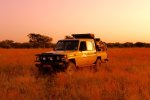 IMG_4763_zpsokgonvka.jpg193.1 KB · Views: 209
IMG_4763_zpsokgonvka.jpg193.1 KB · Views: 209 -
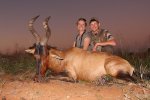 IMG_4744_zpso1wx78bd.jpg222.8 KB · Views: 246
IMG_4744_zpso1wx78bd.jpg222.8 KB · Views: 246 -
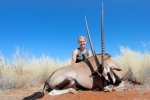 IMG_4845_zps0gb7axpm.jpg206.6 KB · Views: 213
IMG_4845_zps0gb7axpm.jpg206.6 KB · Views: 213 -
 IMG_4840_zps7oy3pdot.jpg165.3 KB · Views: 211
IMG_4840_zps7oy3pdot.jpg165.3 KB · Views: 211 -
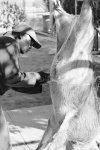 IMG_4682_zpsg9qzgpd5.jpg210.9 KB · Views: 212
IMG_4682_zpsg9qzgpd5.jpg210.9 KB · Views: 212 -
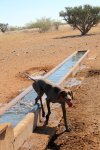 IMG_4909_zpsfvcjupwf.jpg290.1 KB · Views: 231
IMG_4909_zpsfvcjupwf.jpg290.1 KB · Views: 231 -
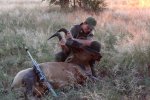 IMG_4696_zpswhz0zyvm.jpg280.5 KB · Views: 196
IMG_4696_zpswhz0zyvm.jpg280.5 KB · Views: 196 -
 IMG_4545_zpscvliuwgl.jpg201.3 KB · Views: 205
IMG_4545_zpscvliuwgl.jpg201.3 KB · Views: 205 -
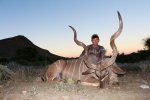 IMG_4480_zpslhlrhonl.jpg196 KB · Views: 212
IMG_4480_zpslhlrhonl.jpg196 KB · Views: 212 -
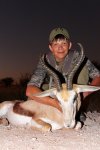 IMG_4957_zpsjwjvdcda.jpg185.4 KB · Views: 201
IMG_4957_zpsjwjvdcda.jpg185.4 KB · Views: 201 -
 IMG_4987_zpsys4jqkt4.jpg326.3 KB · Views: 189
IMG_4987_zpsys4jqkt4.jpg326.3 KB · Views: 189 -
 IMG_4779_zpsnfa5ljeb.jpg86.6 KB · Views: 214
IMG_4779_zpsnfa5ljeb.jpg86.6 KB · Views: 214 -
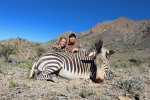 IMG_4397_zps65kctwab.jpg295.2 KB · Views: 202
IMG_4397_zps65kctwab.jpg295.2 KB · Views: 202 -
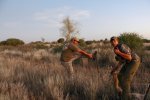 IMG_4951_zpsrvrrkiue.jpg215 KB · Views: 205
IMG_4951_zpsrvrrkiue.jpg215 KB · Views: 205 -
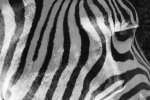 IMG_4421_zpsmuekregk.jpg216.5 KB · Views: 178
IMG_4421_zpsmuekregk.jpg216.5 KB · Views: 178 -
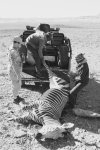 IMG_4423_zpsodt9l8ja.jpg244.4 KB · Views: 215
IMG_4423_zpsodt9l8ja.jpg244.4 KB · Views: 215 -
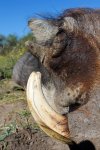 IMG_4648_zps8zuloewl.jpg220.6 KB · Views: 188
IMG_4648_zps8zuloewl.jpg220.6 KB · Views: 188 -
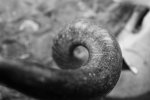 IMG_4514_zpsg3nyesp9.jpg110.7 KB · Views: 207
IMG_4514_zpsg3nyesp9.jpg110.7 KB · Views: 207 -
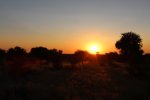 IMG_4930_zpsehlfad9n.jpg116.6 KB · Views: 180
IMG_4930_zpsehlfad9n.jpg116.6 KB · Views: 180 -
 IMG_0936_zpsfmcmujoc.jpg295 KB · Views: 193
IMG_0936_zpsfmcmujoc.jpg295 KB · Views: 193 -
 IMG_4975_zpsf5bkefmh.jpg387.2 KB · Views: 180
IMG_4975_zpsf5bkefmh.jpg387.2 KB · Views: 180 -
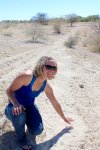 IMG_6305_zpsp6y2kblz.jpg252.3 KB · Views: 206
IMG_6305_zpsp6y2kblz.jpg252.3 KB · Views: 206 -
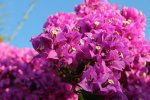 IMG_4830_zpsvrbkrpjm.jpg206.5 KB · Views: 219
IMG_4830_zpsvrbkrpjm.jpg206.5 KB · Views: 219 -
 IMG_4373_zpsnaa7nwqj.jpg232.7 KB · Views: 205
IMG_4373_zpsnaa7nwqj.jpg232.7 KB · Views: 205 -
 IMG_4849_zpsarbn61ux.jpg166 KB · Views: 200
IMG_4849_zpsarbn61ux.jpg166 KB · Views: 200 -
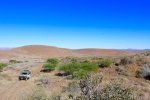 IMG_4567_zpsm5svmdf2.jpg231.1 KB · Views: 219
IMG_4567_zpsm5svmdf2.jpg231.1 KB · Views: 219 -
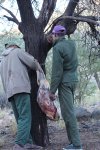 IMG_4468_zpssvngpfgi.jpg646.6 KB · Views: 190
IMG_4468_zpssvngpfgi.jpg646.6 KB · Views: 190 -
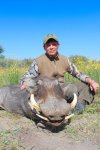 IMG_4615_zpskgbxjs5u.jpg255.4 KB · Views: 193
IMG_4615_zpskgbxjs5u.jpg255.4 KB · Views: 193 -
 IMG_4592_zpswt1dihgv.jpg87.7 KB · Views: 179
IMG_4592_zpswt1dihgv.jpg87.7 KB · Views: 179 -
 IMG_4624_zpsvqzjrvps.jpg271.7 KB · Views: 202
IMG_4624_zpsvqzjrvps.jpg271.7 KB · Views: 202 -
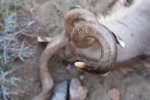 IMG_4523_zpsfn2xe9jb.jpg116.6 KB · Views: 187
IMG_4523_zpsfn2xe9jb.jpg116.6 KB · Views: 187 -
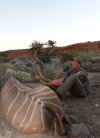 IMG_4493_zpsvipe8lt3.jpg205 KB · Views: 186
IMG_4493_zpsvipe8lt3.jpg205 KB · Views: 186 -
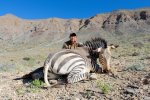 IMG_4405_zpscypeygz1.jpg342.2 KB · Views: 198
IMG_4405_zpscypeygz1.jpg342.2 KB · Views: 198 -
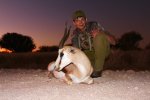 IMG_4954_zpsp2bdmoth.jpg179.9 KB · Views: 201
IMG_4954_zpsp2bdmoth.jpg179.9 KB · Views: 201 -
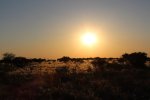 IMG_4576_zps7pakkpr3.jpg134.8 KB · Views: 195
IMG_4576_zps7pakkpr3.jpg134.8 KB · Views: 195 -
 IMG_4861_zpstycxaa8h.jpg105.9 KB · Views: 191
IMG_4861_zpstycxaa8h.jpg105.9 KB · Views: 191
Last edited by a moderator:

